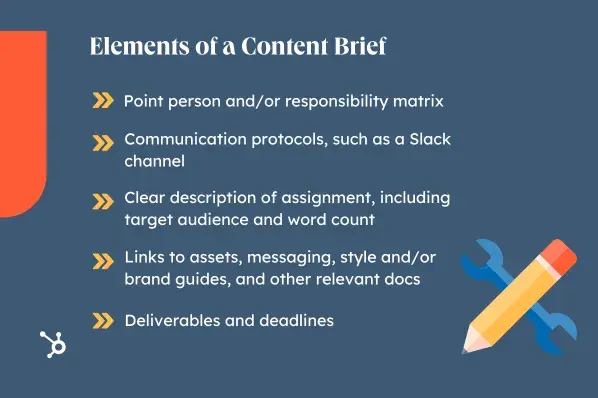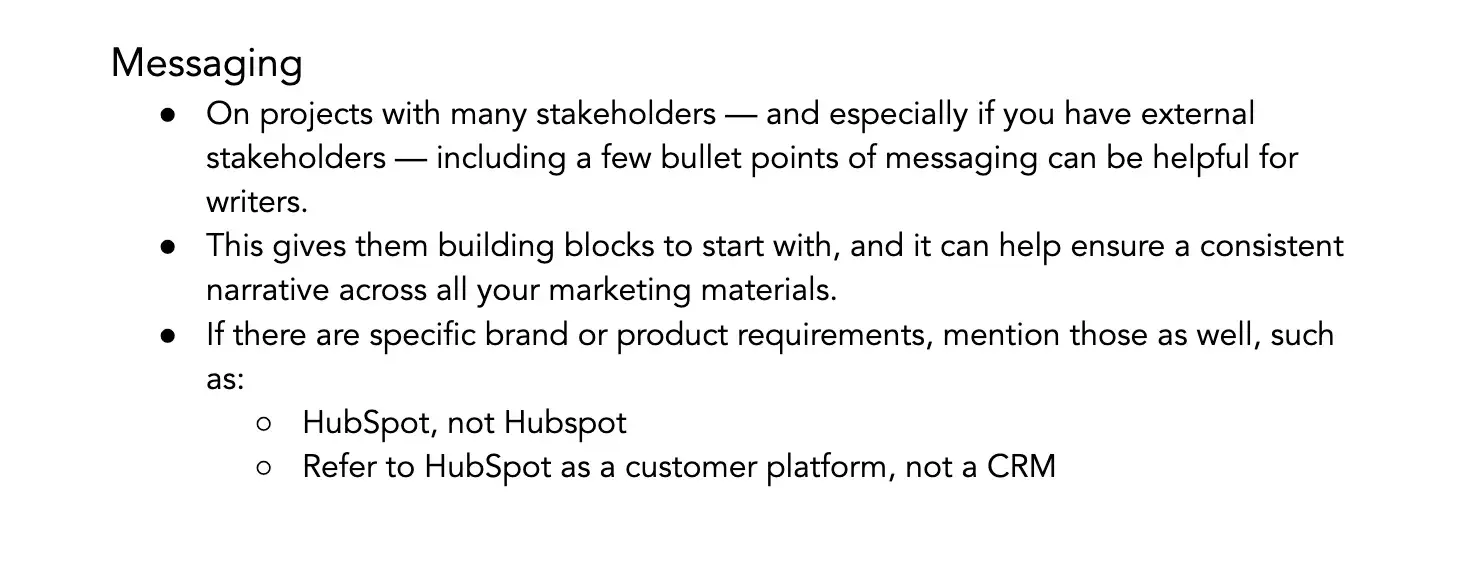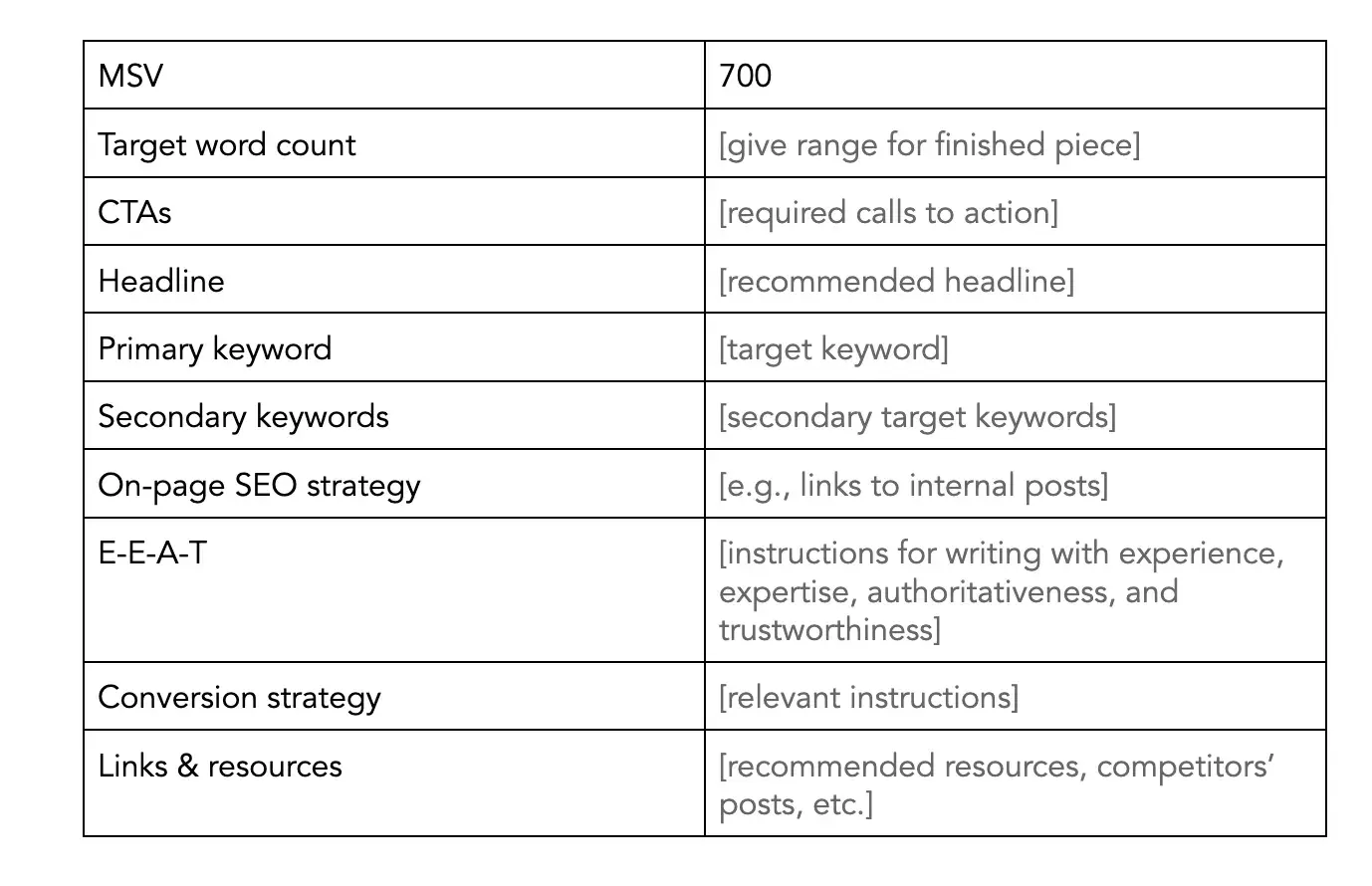I’ve worked in many different industries — as a freelancer, as a freelance manager, as a marketer, as a writer — and you know what never changes? The need for content creators to be crystal clear on their assignments.

One of the easiest ways to achieve this is by writing content summaries.
Don’t be fooled though: even though the summary is simple, it’s still important to get it right.
Content
What is a table of contents?
A content summary is a short document — if you can keep it to a page or two, everyone will be happy — it’s a guide or blueprint for content creation.
The specifics will vary depending on the type of content you’re creating and who the brief is for, but it should anticipate and answer high-level questions about content, format, communication, and so on.
If you’re managing freelance writers, a summary will be a lifesaver for both you and your writers — and that’s an exaggeration. Your content summaries will describe exactly what is expected of the writer, including any necessary subheadings, target word count, and deadlines.
If you’re working on a project with multiple partners in multiple organizations, a simple content summary will provide everyone with a single source of truth.
Content Briefs vs. Creative Briefs
Although they sound similar, the content short and creative panties they serve different purposes. The creative brief describes the campaign and can include more extensive messaging, results from multiple contributors, and other details that shape the entire campaign.
A content summary focuses on a specific piece of content — my examples below are for written content, but you can use the same elements to create a content summary for videos, podcasts, or anything else you produce. If you use software such as Content Hubthe brief will be the basis for each piece of content.
The importance of summaries
Of course, you could try to get by without it, but they save more time than they need to write.
I once worked on a project with several external partners, and apart from Slack and Google Docs, no one used the same organizational tools, and this caused a lot of frustration and confusion.
I’ve put together a generic summary that could be repeated for specific tasks. This included approved messages, links to all the documents everyone was working on, and key deliverables and deadlines. You could almost hear the sigh of relief in the Slack channel.
I used to be a freelance writer, and my favorite client was the one with the best summary. Writing for a new client can be daunting, even for seasoned writers, because you have to learn a new style guide, a new voice, and maybe even an entirely new target audience.
That particular client included a one-page summary with each assignment. It included the target word count and rate, the name of the publication and its audience, as well as links to the style guide and any assets, a description of the assignment and the assigning editor, and a deadline. If an interview was required, contact information was provided.
They were a dream for a freelancer because I never wasted time on logistical issues – expectations were clear and everything I needed was at my fingertips.
If you’re editing content, providing a clear summary will reduce revisions and rewrites (not to mention frustration!). Let’s talk about how to strike a balance between being detailed and being concise.
Table of Contents Elements
The elements of the summary will vary depending on your needs, but here are what I think are absolutely essential:
- Point person and/or a responsibility matrix
- Communication protocols, such as a Slack channel
- A clear description of the project or task, including target audience and word count
- Links to assets, messaging, styles and/or brand guides and any other relevant shared documents
- Delivery and deadlines

You can also include:
When working on podcast marketing for multiple partners, I found it helpful to include a few bullet points of approved messages, indicating who approved on behalf of each partner.
Some stakeholders may have specific requirements for how their company or organization is described, and your writers and marketers will need that information.
Keep it simple:

Pro tip: Especially when working with external partners, it’s often worth repeating important branding details found in your style guide. Don’t get too bogged down here—the style guide exists for a reason—but stakeholders will appreciate having this information on hand.
If you’re writing content summaries for freelancers, you’ll want to make sure they have access to all the information they might need during their assignment – style or brand guidelinesSlack channels, who to contact with questions and any task context.
Let’s dive into the “clear job description,” since it can contain many important details for your writers, such as:
- Purpose. Tell the writer what the goal of the content is; maybe it’s a blog post that addresses demand for a specific keyword, or maybe you need ad copy and a series of CTAs for a new product.
- SEO/keywords. What should your writer know about targeted keywords? Are there any keywords or topics they should avoid to prevent content cannibalization?
- Subject matter experts and resources. In ours brave new world EEA-Tifiedfirst-hand experience is more important than ever. If your writer is expected to conduct interviews for SMEs, include this in the summary. You can also ask them to provide links to any other sources they’ve used to help with any light fact-checking.
- Required subtitles and other technical specifications. If you’ve done your keyword research, you may already have H2 or H3 subheadings in mind. This will also help the writer understand how you want the content to be organized. Your writer may also be expected to provide meta descriptions, alt text for images, or SOCIAL MEDIA copy.
- Other formatting requirements. If the document needs to be formatted in a certain way, explain how (ideally with an example or template). If you can accept (or prefer) a particular file type, include it – don’t assume that everyone uses Google Workspace or Microsoft Word just because you do.
- Sharing/Access Requests. We all know the frustration of seeing “Access Denied”. Set everything up for success by including information about who to share files with.
- How and where to submit a completed assignment. Does your workflow require tagging specific people in an Asana tab? Do writers email you when they finish an assignment?
- Naming conventions. If any of the output, including assets, should follow a specific file name convention, outline this in your summary.
- Expectations after the task. If writers expect to hear from editors, let them know in advance—freelancers will especially need to make time for this. And if you manage a large number of freelancers, it can be useful to include any reminders about rate and invoicing requirements.
How to write an executive summary
Let’s create a template: Using the word processor of your choice, create a one-page document with a two-column table. In the left column, write the basic elements: matrix of persons and/or responsibilities, communication protocols, task description, means, deadlines and results.
This is a personal preference, but I like to list communication information in the top left header of the summary, including the relevant Slack channel — I repeat this information when I have to create other documents for stakeholders, so everyone gets used to being front and center.
It immediately answers the main questions: Who is in charge? Who should give the approval? Where did you tell me Google Drive was? Why didn’t anyone tell me there was a Slack channel for this project?
Even if this information seems redundant, it can be especially useful for new freelancers or new hires, so I suggest making them part of your template. Freelancers often have several (or more) clients, all of whom may have different requirements and formats, and this will save them time and sanity.
Your summary might start like this:

Pro tip: You’ll notice that I’ve included the time and time zone in the due date — I feel this information is essential. Especially in the age of the distributed workforce, where employees and freelancers may be in different time zones, including this will save everyone a headache and set your writer up for success.
Before you go into detail in your job description, think about who your executive summary is for. Freelance writers will likely need more links and more context than in-house writers, who already have their company style guide marked up (right? right?).
You may find it helpful to create two templates, one for in-house writers and one for freelancers, so you can provide your marketers with the most concise summary. For example, freelancers may not need information on KPIs; In-house writers who upload their work to the CMS will not need a submissions folder.
What is the absolute minimum amount of information a writer needs to successfully complete an assignment? It’s tempting to include links to everything related to the project, but don’t overload your writers with unnecessary context.
At this stage it will be useful to talk to them, whether they are in the house or free, and find out what helps them the most.
You will need to describe the task, its purpose and audience:

Pro tip: For freelancers, always consider including a link to your style guide. That way, it’s always close at hand. And a simple “thank you” is always a nice touch.
If your content has a lot of specific requirements for conversion strategy, SEO, keywords, and the like, include them in a table so they’re easy to break down.
When I was working as a freelance writer, this was very helpful. It’s a small thing, but being able to see all of this information in the same format with each task makes it much easier to get started on tasks.
Information often included in HubSpot tasks are monthly search volume, any required CTAs, and SEO and conversion strategies:

Write your first summary
Once you’ve created a template (or two) that fits your needs, your summaries won’t take much time to fill out. And whether you’re working with in-house content creators, freelancers, and/or outsourced stakeholders, having a single source of information will make everyone’s job easier and more efficiently.
https://blog.hubspot.com/marketing/content-brief




